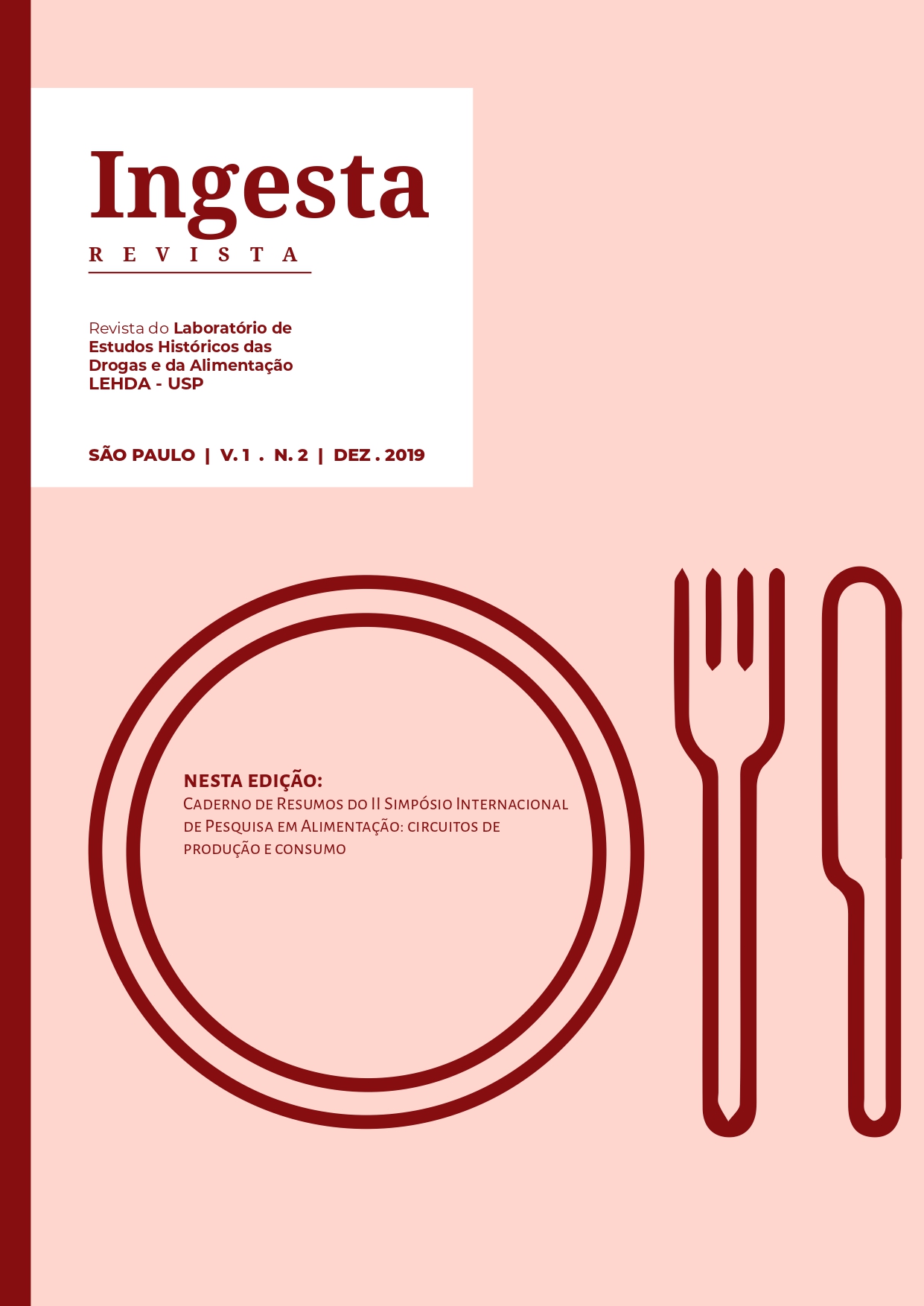Para a cozinha
fazendo, modelando e musealizando a culinária americana
DOI:
https://doi.org/10.11606/issn.2596-3147.v1i2p75Palavras-chave:
Cozinha doméstica, Cultura material, MuseusResumo
The word kitchen has done as much work in the English language as the people who have toiled in the space the word names. The Bard himself, William Shakespeare, “verbed” the term in 1623, using kitchen to mean serving the food in the space in which it was prepared: “There is a fat friend at your master’s house, That kitchin’d me for you to day at dinner.” A century later, Scots used the term as a synonym for both pleasurable eating and frugality—for seasoning food and for budgeting and provisioning food beyond harvest. By the end of the nineteenth century, kitchening was interchangeable with cooking, food service, and the related work undertaken in this domestic production space.
Existing examinations of the American kitchen emphasize the architectural design of the space, often pointing to technological and energy innovations as factors for the space’s changing design over the centuries. Historians of women and labor also stress mechanization, arguing that the technologies touted as labor saving were, in reality, not—in many cases, new technology raised standards and increased women’s work. Understanding this, scholars have focused on women’s decisions about kitchen design and cookery, seeking evidence in diaries, letters, and recipes. Rising research interest in food studies has renewed scholarly attention to the kitchen and its contents and occupants, linking in interesting ways food, material culture, labor, and consumption.
In this presentation I discuss how attention to the material and visual evidence of American women’s kitchening, from making food to (re)modeling the workspace of the kitchen itself, improves our understanding of the history of the kitchen derived from prescriptive literature such as household manuals and home economics texts. I consider the related changes in domestic kitchens and American foodways in the United States since the 1840s, when the processes of industrialization shifted the ways Americans worked and ate. Last, I devote attention to the ways in which American museums have and continue to collect and display kitchen objects. Museums depicting preindustrial kitchens often feature cooking demonstrations utilizing the era’s tools and foodways or emphasize the dining experience, while museums with industrial and postindustrial collections display the kitchen and its mass-produced material culture as aesthetically delightful products of design divorced from the foods these objects help to prepare. I hope this presentation may elicit a discussion about what museums should be collecting to represent kitchening in the 21st century.
Downloads
Downloads
Publicado
Edição
Seção
Licença
Autores que publicam nesta revista concordam com os seguintes termos:
- Autores mantém os direitos autorais e concedem à revista o direito de primeira publicação, com o trabalho simultaneamente licenciado sob a Licença Creative Commons Attribution que permite o compartilhamento do trabalho com reconhecimento da autoria e publicação inicial nesta revista.
- Autores têm autorização para assumir contratos adicionais separadamente, para distribuição não-exclusiva da versão do trabalho publicada nesta revista (ex.: publicar em repositório institucional ou como capítulo de livro), com reconhecimento de autoria e publicação inicial nesta revista.
- Autores têm permissão e são estimulados a publicar e distribuir seu trabalho online (ex.: em repositórios institucionais ou na sua página pessoal) a qualquer ponto antes ou durante o processo editorial, já que isso pode gerar alterações produtivas, bem como aumentar o impacto e a citação do trabalho publicado (Veja O Efeito do Acesso Livre).



